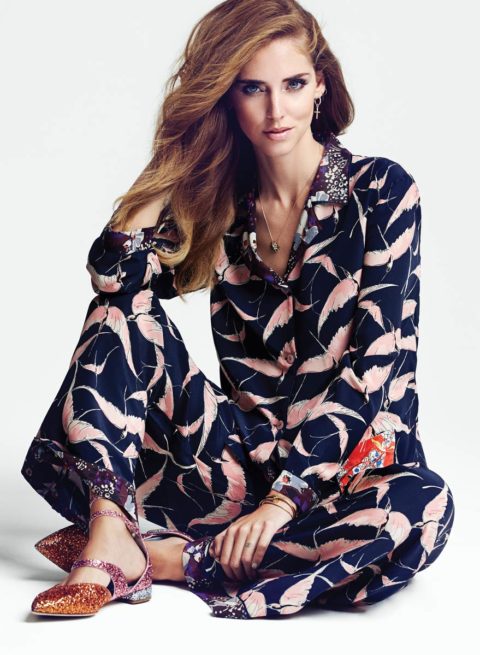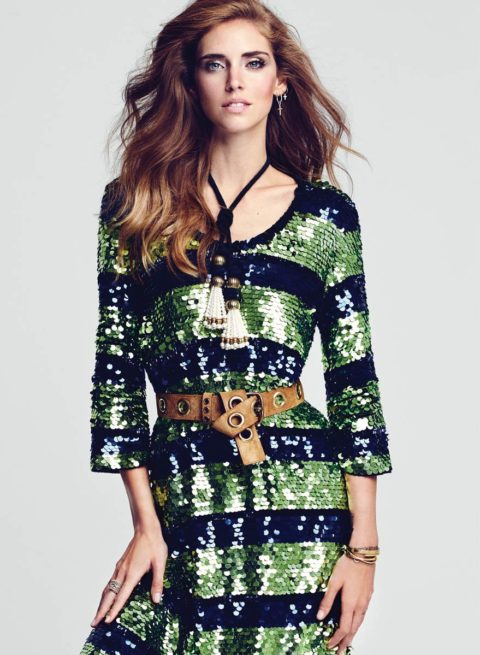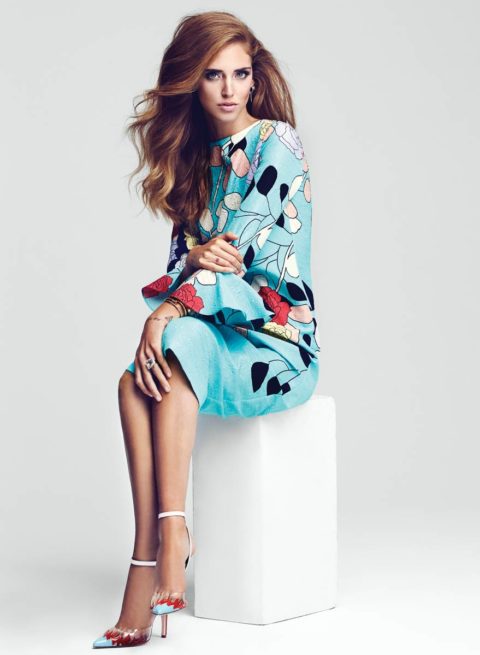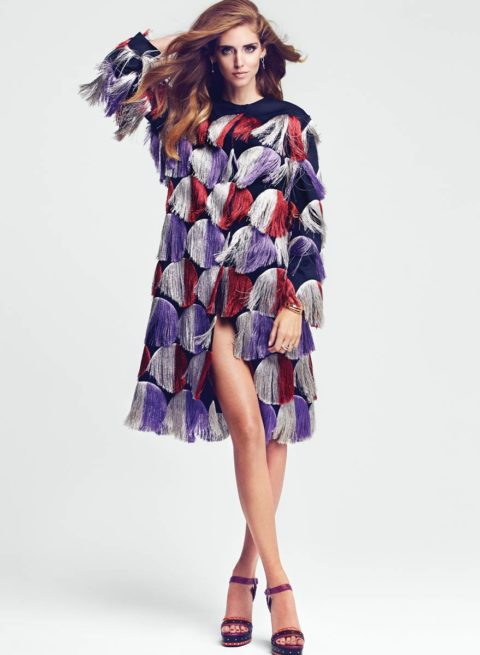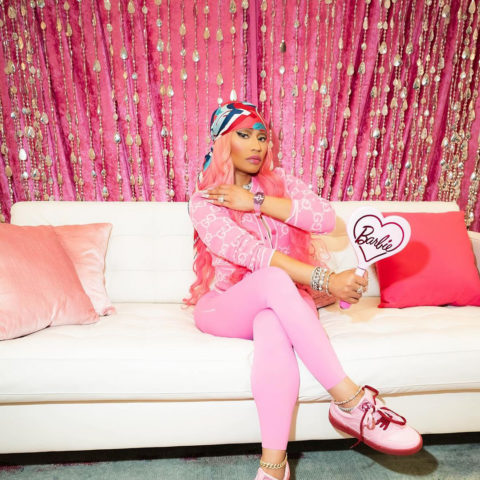FASHION Magazine Winter 2016 Cover: Chiara Ferragni
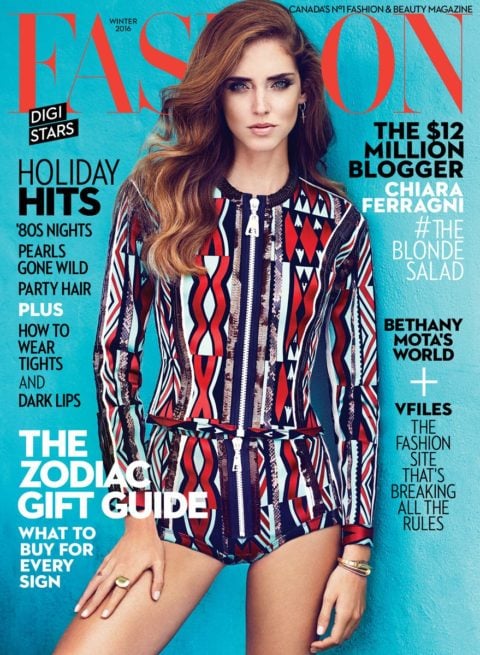
“Experience has made me rich and now they’re after me!” these lyrics, from “Material Girl,” the ’80s Madonna hit, are blaring from a speaker at L.A.’s Lightbox Studio, three feet away from Chiara Ferragni. Although the volume is already booming, the 28-year-old creator of TheBlondeSalad.com asks for the track to be cranked up. With curlers in her hair and two oxygenated under-eye patches firmly planted on her skin (Ferragni drove here wearing them), she sings at her phone, giving the chorus a run for Madonna’s money. Her hair and makeup team are dancing around as she checks her Instagram feed, which is 4.7-million followers strong (Madonna has 4.8 million). After she posts a photo, the glam squad joins in, joyfully screeching “Maaaatterrial” off-key until the song ends.
Ferragni and Co. have every right to be elated. The blogger-turned-model-turned-shoe designer-turned-celebrity-turned-multi-millionaire is still feeling the PR push of a much-publicized Harvard University case study of her brand. The academic analysis stated that The Blonde Salad company was estimated to rake in $8 million this year.
When this earning is brought up, the Italian-born, L.A.-based entrepreneur quickly dismisses the number. “Oh, no,” she says while strapping on her $14,000 Rolex after her photo shoot with FASHION. “It will be more than that. Maybe $12 million or $14 million? Maybe more. We are really busy.”
Much of her substantial paycheque comes from her eponymous shoe line, as well as a mountain of public appearances, collaborations, advertisements on her site and endorsement contracts. She is also the only fashion blogger to have been listed in Forbes magazine’s coveted 30 Under 30 list this year.
Ferragni’s own list of inspiration is heavy on Italian women in fashion, particularly those who paved unconventional paths of their own. Born and raised in Cremona, a city in Italy’s Lombardy region, Ferragni’s main motivator was her mother, Marina Di Guardo, who experimented with fashion and worked at a showroom for Italian label Blumarine (Di Guardo is now the author of three books, one of which has characters resembling Chiara and her sister, Valentina). Two style icons who pushed Ferragni to really test the waters with her own personal style were the late Anna Piaggi and Anna Dello Russo (whom Ferragni now calls a friend). But she has yet to meet her ultimate idol, Miuccia Prada. “It is a goal of mine to talk with her,” says Ferragni. “When I do, I have a million questions.”
One such question is how to make time for it all—though it seems Ferragni is a master multi-tasker. While changing out of a vintage pair of shorteralls and Chanel wedges, and into a Valentino pyjama suit and a pair of never-been-photographed sparkly flats from her shoe line, Ferragni is madly typing on screens. Today’s mini-drama involves finding a hotel large enough for her crew at New York Fashion Week. Her entourage is the size of an ’80s pop star’s, but she asserts that every person is needed.
“I travel a lot,” says Ferragni, who has changed time zones five times this month. “We have a big team of 18 people, and we have up to 20 or 30 contracts going on at once. I think you should always have a big team behind you if you are a big brand because it makes you think big.”
While this big-picture thinking might lead you to assume that Ferragni’s strategy is to become a mass media starlet with Walmart appeal, her recruitment of Louis Vuitton’s former digital correspondent for Italy, Alessio Sanzogni, proves otherwise. In conversation, Ferragni shows absolutely no signs of FOBU (Fear of Being Unfollowed)—she has even refused million-dollar deals, claiming they were “off brand.”
“After my first fashion week, there were so many brands approaching us, and we said no 90 per cent of the time,” she says. “We didn’t care about making a lot of money—it seemed so short term. We’ve always wanted to create something bigger.”
Ferragni laughs at critics who consider her part of a well-oiled advertising machine. “It’s bizarre to say all bloggers are sellouts,” she says. “That kind of thinking is outdated. People who are serious about this business do so much more—they have companies and brands. When someone calls me a blogger, I think, ‘That’s one of the things I used to do.’ I’m a creative director for my shoe brand, I’m the editor-in-chief of The Blonde Salad, which is a website and not just a blog anymore.”
Part of Ferragni’s business strategy is working with labels she respects. “If you partner with brands or products you actually like and use then it’s honest work,” she says. “If someone were to give me money to wear a bag I didn’t like, I wouldn’t be doing it. I would lose my credibility right away.” Ferragni acknowledges that there are bloggers who pretend to like products and post selfies with them just for a steady cheque. “Some people will take the money and not care, but they aren’t the ones who are going to last.”
Perhaps her background as a law student at Milan’s Bocconi University has helped shape Ferragni’s convictions (plans on finishing her law degree are on hold for the moment). Although she moved to Hollywood in 2014 and is fascinated with American culture (one of her favourite movies is Pretty Woman; she has a crush on Robert Pattinson; and she’s obsessed with Wes Anderson), Ferragni, unlike Tavi Gevinson, has no plans to cross over to the silver screen. “I would never want to be an actress,” she says. “I’m already a character who does different things and is in different situations all the time. When you are blessed like this, how can you ask for more?”


